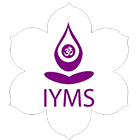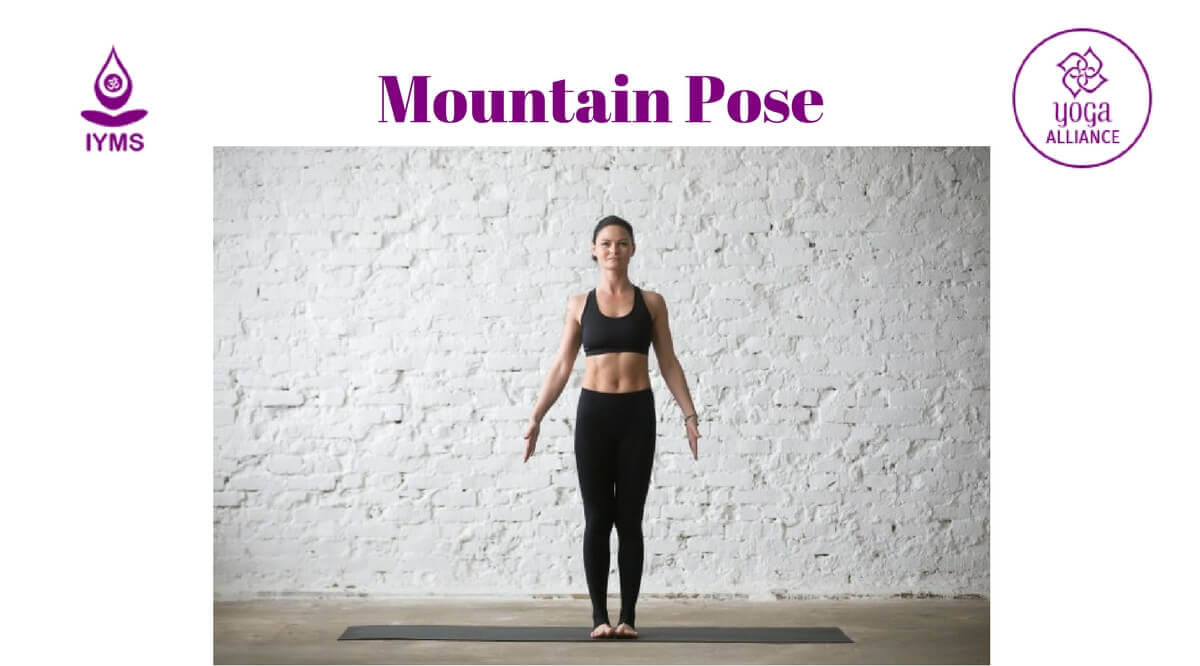It’s perhaps only in yoga, that standing still is a form of exercise by itself. The mountain pose is one of the first poses that a yoga enthusiast will learn. As the asana’s name suggests, this posture brings you the stillness and firmness of a mountain.
The mountain pose Sanskrit name is Tadasana. Here ’Taḍa’ means mountain and ‘asana’ means posture.
This standing posture is fundamental to several yoga asanas in different ways. It is the starting point of many other standing yoga postures, including the Sun Salutations or the Suryanamaskara.
Pose Information
- Yoga Pose English Name: Mountain Pose
- Sanskrit Name: Tadasana
- Pose Level: Beginner
- Pose Type: Standing
- Strengthens: Thigh, Knee and Ankle
Preparatory Poses
- Downward Facing Dog Pose or Adho Mukha Svanasana
- Standing Forward Fold or Uttanasana
- Five-pointed Star Pose or Utthita Tadasana
Follow-up Poses
- Start all the standing poses with the balancing sensation of Tadasana.
Mountain Pose and Sama Sthiti
Here’s a little trivia about mountain pose: It is very close to Sama Sthiti, the state of balance, the stillness you come back to after completing a strenuous pose and before you begin another posture.
While Tadasana is part of the Iyengar style of yoga, Sama Sthiti comes from the Ashtanga yoga style. The mountain pose is taught as a means of building a foundation for other standing asanas, while Sama Sthiti is used as a means to bring yogis and yoginis to their center in between yoga postures.
How to Do a Mountain Pose?
If you look at images of Tadasana, it’s not much to look at. It merely requires you to stand. But to get the posture’s alignment correct and to maintain it requires a lot of mental effort.
Follow these mountain pose steps along with the prescribed mountain pose breathing pattern to learn one of the most basic yoga postures.
Step 1
Stand on the mat with your toes touching, but with a slight gap between your heels. Lift your toes and splay them on the mat. This will help distribute your weight evenly between both feet. If you feel you haven’t got the necessary balance, try lifting your toes again and spreading them on the mat until you feel the balance is right.
Step 2
Next, inhale and tighten your thigh muscles so that your kneecaps are slightly lifted. Do not hyperextend your knees or tighten the muscles of your stomach. Rotate your thighs a little inwards to open your hips.
Move your pelvis so that your tailbone points down to the floor.
Step 3
Your lower ribs must be tucked into your body. Exhaling, lift the sternum upwards and simultaneously move your shoulders downwards into your back.
Step 4
Keep your palms by your sides, beside torso. There must be no tension in your arms.
Inhale, and raise your head slightly upwards, bringing your chin parallel to the floor. Your head must be in a straight line from your pelvis. Your pelvis must be in line with your ankles. Keep your face muscles relaxed.
Hold the pose for about five breaths, or for a minute.
Mountain Pose Beginners Tip
Tip 1
If you are unable to balance with your feet together, try doing the asana with your feet apart. Your feet should have a hip-wide gap and must be parallel.
Tip 2
You could also do the asana standing against a wall. Let your heels, sacrum and shoulders touch the wall. Make note head should not touch the wall. This will help you learn the correct alignment of your feet, hips, spine and head. Do it this way until you get the hang of it and then move on to the proper mountain pose.
Mountain Pose Yoga Benefits
The mountain pose exercise has many positive effects on your mind and body. Tadasana is a great yoga pose which looks very simple and is easy to practice. The after effects of the pose are a steady mind and body with less stress and improved concentration.
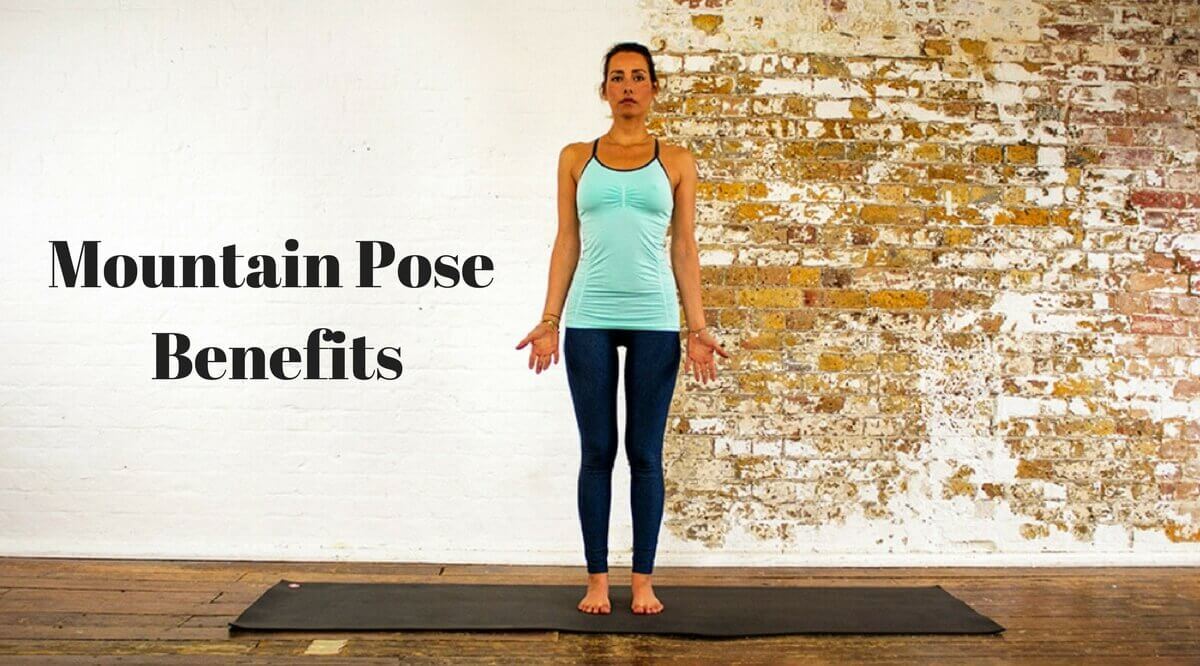
Take a look at the benefits of mountain pose in yoga.
- It helps in increasing height.
- This pose strengthens your thighs, knees and ankles muscles.
- It helps build strength and flexibility in your hips, feet and legs. The stretching of the hips will help open the pelvis. Its spillover effect is that this helps relieve some of the stress on your lower back.
- It also firms up the muscles in your abdomen and buttocks.
- It helps with digestion.
- This pose is especially good for the spine, adding strength and flexibility. It also does wonders for your overall posture, alleviating the dullness that seeps in due to hunching over a desk all day.
- Tadasana helps improve focus, concentration and keeps you alert.
- It also helps with flat feet and sciatica.
Mountain Pose Precautions
Although the Tadasana yoga pose is simple, its benefits can aggravate medical conditions. To avoid this, follow these precautions:
- Do not shift your weight to the outer edges of your feet or heels. You must at all times ensure that your weight is evenly distributed on both your feet.
- Avoid doing the pose when you are suffering from migraines or headaches. The pose requires concentration and could aggravate your condition.
- If you suffer from insomnia or other sleep disorder, avoid this pose as it improves alertness.
- Mountain pose is also inadvisable for people who have problems with blood circulation.
- If you’ve had a recent shoulder injury, avoid this asana until the doctor gives you the go-ahead.
Mountain Pose Variations
There are several modifications and variations to the mountain pose sequence that can deepen the pose or add new challenges to it. Regardless of which modified mountain pose you choose to try, always make sure that the alignment of your feet, knees, back and shoulders are maintained.
1. Close your Eyes
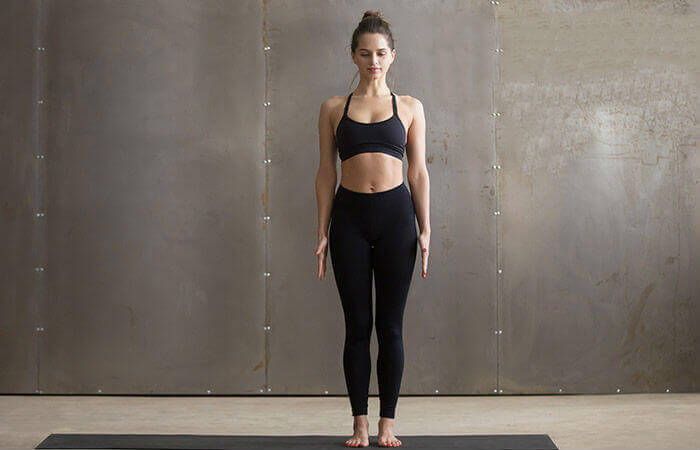
You can deepen the Tadasana pose by practicing with your eyes closed. However, try it this way only after you have mastered the basic pose. Balancing without reference to sight is challenging.
2. Extended Mountain Pose
Once you have achieved the basic pose, you can try the extended mountain pose.
- Hand Variations
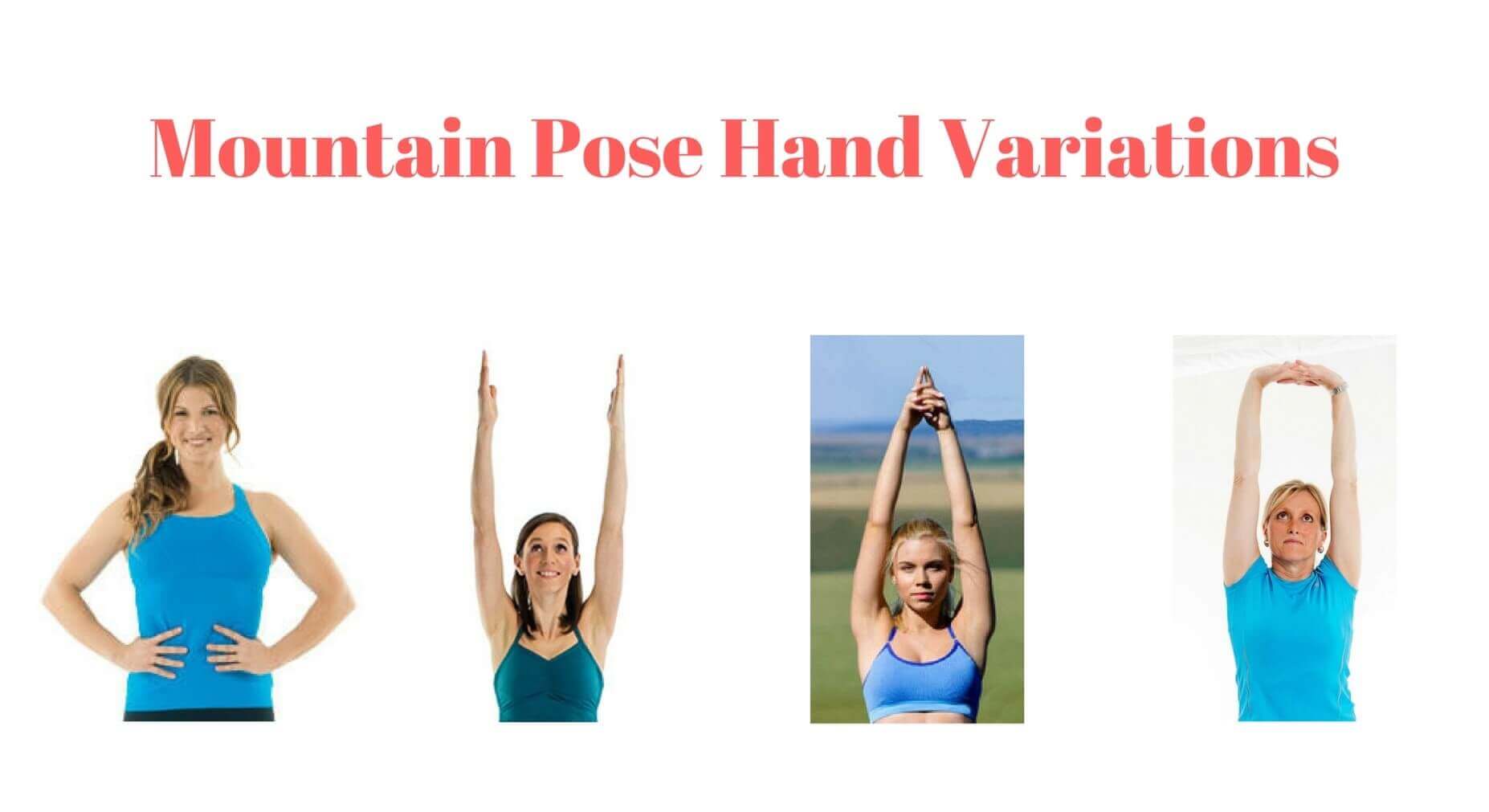
1. Bring the hands to your waist and squeeze the abdomen. This posture will help your deep core muscles to stabilize the lumbar spine.
2. Lift your arms over your head, keep them parallel to each other and perpendicular to the floor. Your palms must face inward.
3. Lift your arms over your head and join palms in a namaste position. Keep your arms away from the ears.
4. Stretch out your arms in front of you and interlace your fingers. Next, turn the palms away and stretch the arms upwards such that palms will face the ceilings.
- Feet Variations
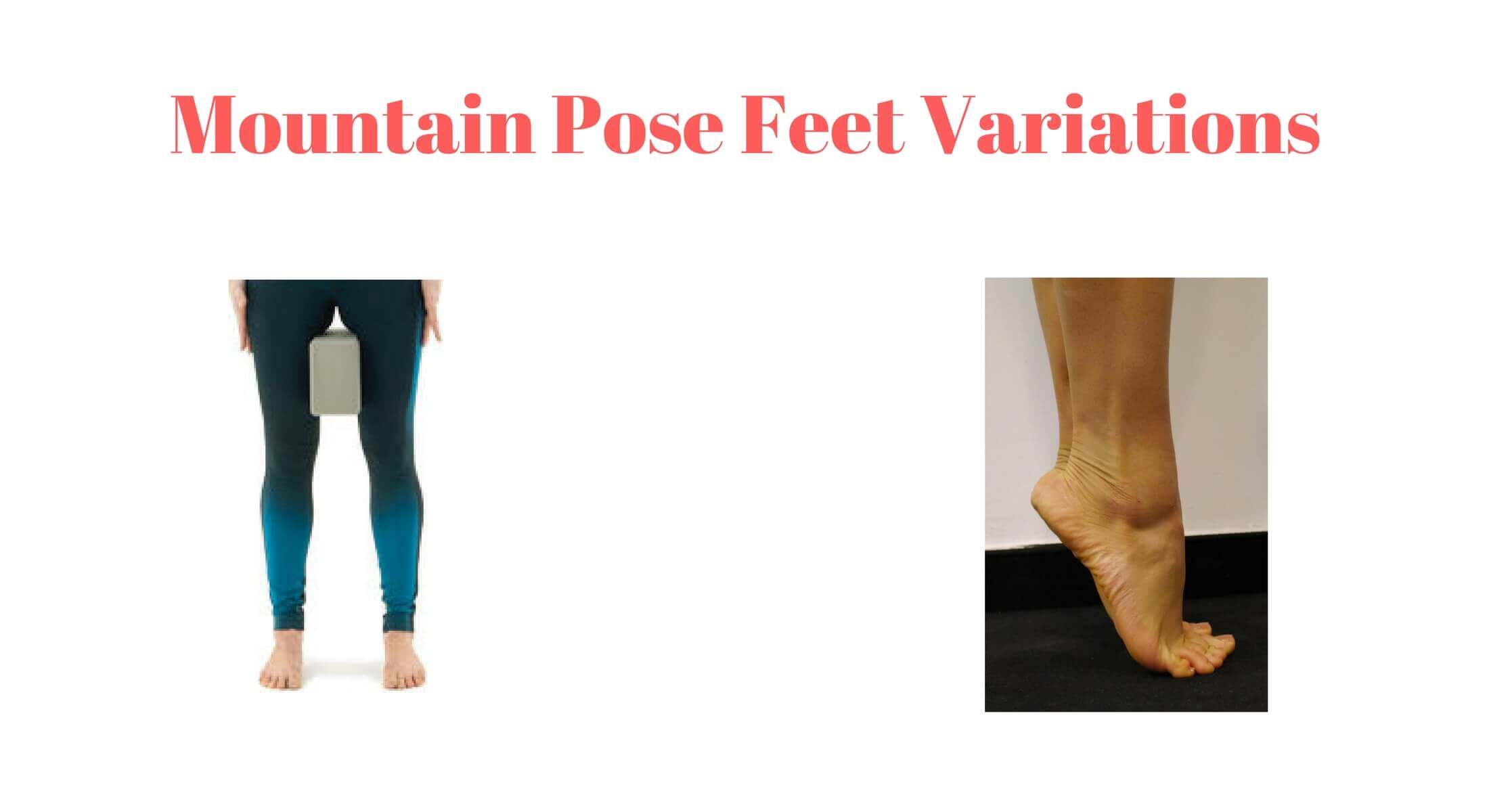
1. Keep hands besides your torso like in basic mountain pose. You can use a block between your upper inner thighs to try a new variation. Squeeze the block between the thighs to strengthen the inner thighs, outer thighs and hip muscles.
Conclusion
Once you are done with tadasana or the mountain pose , you can move on to several other standing yoga positions. This pose helps internal organs function efficiently, improves respiration, digestion and circulation.
This pose brings stillness to your mind and body, enabling you to watch the rushing world go by, while you remain calm and unaffected by it. While you stand still, the asana will quietly work its magic on your body, helping you feel better when you get back into the fast-paced world.
